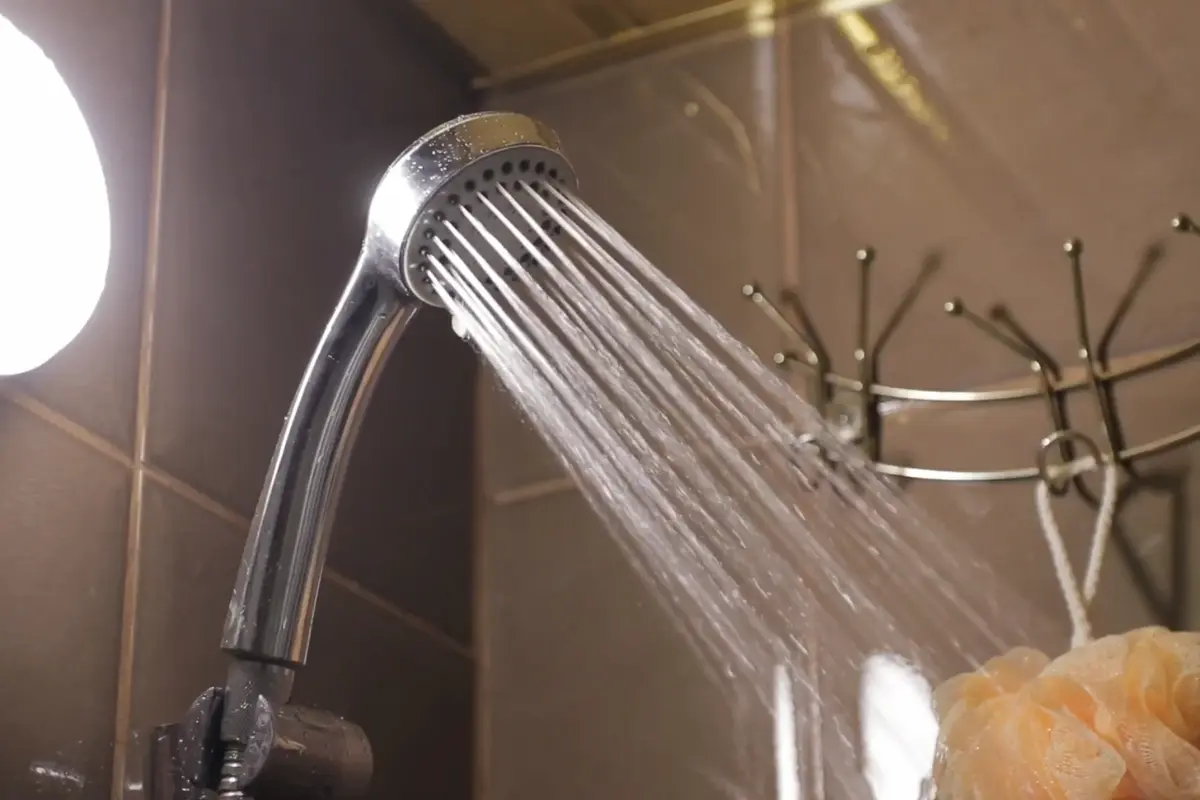Compare shower vs bath water usage to see which method is better for saving water. Find practical advice for eco-friendly bathing habits.
Choosing how to bathe can make a big difference in your water bill and environmental footprint. Showers and baths both have their place in our daily routines, but they use water in very different ways. Some argue that showers are more efficient, while others swear by the relaxation of a full tub.
This comparison isn’t just about comfort; it’s about sustainability and conservation too. It’s key to understand how each method affects water consumption. This knowledge helps households make informed decisions. It can lead to both cost savings and a reduced impact on our planet’s precious resources. Dive into the details of shower versus bath water usage and discover which is the smarter choice for you and the environment.
Water Consumption Rates
Many people ponder over bath vs shower water usage. It’s a key part of our daily water consumption. Everyone needs to understand how their choices impact our water resources. This topic explores which method uses more water and how different factors can change the amount used.
Showers Vs Baths
Deciding between a shower and a bath affects water usage. A full bathtub can require up to 70 gallons of water. Contrastingly, a five-minute shower with a non-low flow showerhead might use 25 gallons. With a water-saving showerhead, this can drop to 10 gallons. It’s clear that showers generally use less water than baths, given a short duration and efficient hardware. This is important for areas with water scarcity.
Here are key points:
- A standard bath uses more water than a short shower.
- A water-saving showerhead can cut usage significantly.
- Shorter showers always mean less water used.
Let’s look at the numbers in a table:
| Bath/Shower Type | Water Usage |
|---|---|
| Standard Bath | 70 gallons |
| 5-minute Shower (standard) | 25 gallons |
| 5-minute Shower (low-flow) | 10 gallons |
Factors Affecting Usage
Several factors influence bath vs shower water usage. The length of a shower plays a big role. Longer showers use more water. Bath size also matters. A larger tub needs more water to fill. The type of showerhead is crucial too. Standard showerheads use more water than low-flow models. Personal habits are a factor as well. Some people turn off the water while soaping up, which can save a lot.
Here are some factors:
- Shower length: Longer showers increase water use.
- Bath size: Bigger tubs need more water.
- Showerhead type: Low-flow models are better for saving water.
- Personal habits: Turning off water when not needed saves a lot.
Each of these points helps in understanding how to manage water consumption. Being mindful of these can lead to substantial savings.
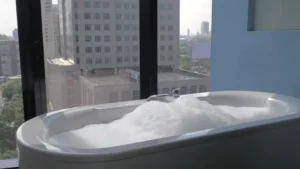
Environmental Impact
Every day, people choose between a shower and a bath. This choice can have a big effect on the environment. It is important to think about how much water we use. This post looks at the water and energy used in showers and baths.
Water Scarcity Concerns
Many places around the world don’t have enough water. Choosing between a shower and a bath can make a big difference. A full bath can use up to 70 gallons of water. A short shower often uses less than 20 gallons.
Here are some key points:
- A standard shower head uses 2.5 gallons per minute.
- Taking a 10-minute shower can save water.
- Baths usually use more water than showers.
- People can save water by taking shorter showers.
It’s not just about the amount of water. It’s about using what we have wisely. Taking a shower instead of a bath can help save water. This is very important in dry areas.
Energy Use Comparison
Heating water takes a lot of energy. Showers and baths both use hot water. But they don’t use the same amount. A shower heats water as you use it. A bath needs all the water heated at once. This can use more energy.
Here are some points to think about:
- Heating water for a bath can use more energy.
- A shower heats less water over the same time.
- Energy-efficient shower heads can help save energy and water.
Choosing to shower instead of bath can cut down on energy use. This helps the environment and can lower bills. It’s a simple change that can make a big impact.
Health And Hygiene
Choosing between a shower and a bath affects both health and hygiene. This topic explores water usage in both options. Many people wonder which is better. Let’s dive into the details.
Cleanliness Benefits
Being clean is important. Showers and baths both keep us clean, but differently. Showers are quick and use less water. They can be better for a fast clean. Showers help remove dirt and sweat easily. This is because water runs over the body, taking dirt with it. Baths, on the other hand, allow for a deep soak.
This can help loosen dirt and relax muscles. But, sitting in the same water can be less effective at removing dirt. For those who are very active or get very dirty, showers might be better. Baths can be good for a relaxing clean. It’s all about the right choice for the situation.
Let’s look at some points:
- Showers are quick and save water.
- Baths offer a deep soak but use more water.
- Choosing depends on your needs.
Skin Health Considerations
Skin health is key. Both showers and baths impact it. Showers, especially short and cool ones, are gentle on the skin. They prevent dryness. Hot water for too long can dry out the skin. Baths can be good for the skin too. Adding oils or oatmeal can soothe dry or irritated skin.
But, too long in hot water can also cause problems. It can strip away natural oils. So, it’s about finding a balance. Short, lukewarm showers or baths with skin-friendly products are best.
Here are some tips:
- Short, cool showers keep skin healthy.
- Baths with oils can soothe the skin.
- Avoid long, hot showers or baths to protect skin oils.
Water usage bath vs shower is a big part of this choice. Both have benefits for cleanliness and skin health. The key is making smart choices based on your own needs.
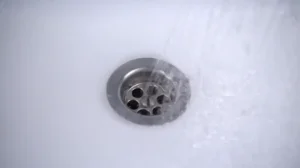
Time Efficiency
Many people wonder about bath water usage vs shower and which is more time efficient. Some prefer a quick rinse while others enjoy a soak. Each method has its own impact on time and water consumption. Let’s explore how these two common practices differ in their demands on our schedules and resources.
Average Time Spent
Understanding the typical duration of showers and baths is key. Showers are often faster. A person might spend about 8 minutes here. Baths could take longer, sometimes up to 30 minutes or more. This varies with personal habits.
Let’s break it down with some points:
- Showers usually last 5-10 minutes.
- A bath might take 15-30 minutes, or more.
- Setting up a bath takes time. Filling the tub can add 5-10 minutes.
These numbers show that showers often win in time saved. But, a quick bath can be close in duration to a long shower. It’s all about personal choice and habits.
Daily Routines
Our daily habits shape our preference for showers or baths. Some like to shower fast in the morning. It wakes them up and fits into a busy schedule. Others find a bath at night helps them relax.
Here’s a simple comparison:
- Morning routine: A quick shower fits well.
- Evening wind-down: A bath might be better.
Most find a shower to be the best pick for everyday use. It’s easier to fit into a hectic day. Baths tend to be less common. They are often seen as a treat rather than a daily activity. It’s clear that when time is tight, a shower is likely the better choice.
Cost Analysis
Deciding between showers and baths affects your water usage and costs. This guide examines how these choices impact your wallet.
Water Bills Breakdown
Understanding your water bill is key. A shower typically uses less water than a bath. Let’s look at the numbers:
- A standard shower head flows at about 2.5 gallons per minute.
- An average bath uses up to 36 gallons of water.
- A 10-minute shower can use just 25 gallons.
Quick showers save water. Baths often double the usage. This means higher bills. Here’s a simple table to show the differences:
| Activity | Water Usage (Gallons) |
|---|---|
| 10-minute Shower | 25 |
| Average Bath | 36 |
Shorter showers mean less water. Less water means smaller bills. It’s that simple.
Long-term Savings
Small changes add up over time. Imagine saving just 11 gallons per day:
- That’s over 4,000 gallons a year.
- It could lead to big savings on your bill.
Think about installing a low-flow showerhead. This step can reduce flow to 1.5 gallons per minute. The savings are clear:
| Shower Head Type | Water Usage (Gallons per 10 min) |
|---|---|
| Standard | 25 |
| Low-flow | 15 |
Choose a low-flow option can make a big impact. Less water used equals money saved. Over months and years, the savings are even more impressive.
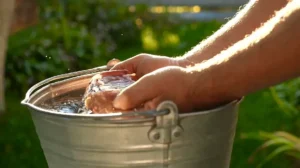
Personal Preferences
Many people wonder about the water usage of showers compared to baths. It also depends on what someone likes. Some prefer quick showers. Others enjoy long baths. This can also depend on where they are from or how they grew up.
Comfort And Relaxation
Choosing between a shower and a bath often comes down to comfort. Showers can be quick and refreshing. Baths can be slow and calming.
Here are some points to consider:
- Showers are great for a fast clean. They can wake you up.
- Baths help with relaxation. They are good for sore muscles.
Taking a bath can be a special time. You can add bubbles or oils. This makes it more relaxing. Yet, baths need more water. This is important to remember.
Cultural Influences
Different cultures have different views on baths and showers. Here are a few examples:
| Country | Preference | Reason |
|---|---|---|
| Japan | Bath | Tradition of soaking. |
| USA | Shower | Fast pace of life. |
In some places, baths are a big part of life. They bring families or communities together. In others, showers fit better with a busy life. Knowing this helps us see why people choose differently.
Innovative Solutions
Many people wonder about water usage shower vs bath. Some prefer showers, while others enjoy baths. But which uses less water? This topic covers innovative solutions to help save water in our daily routines.
Water-saving Showers
Shower time can use a lot of water. But new technology helps cut down on waste. Low-flow showerheads are a smart choice. They reduce water flow without sacrificing pressure. Look for showerheads with a WaterSense label. This means they meet EPA criteria for efficiency and performance.
- Shorter showers can also save water. Try to keep it under 5 minutes.
- Turn off the water while soaping up. This simple step can save gallons.
- Shower timers remind us to be quick. They’re easy to use and effective.
Leaks can waste water too. Fixing a dripping showerhead can save over 500 gallons a year. That’s a lot of water saved!
Eco-friendly Baths
Baths don’t have to waste water. With the right approach, they can be eco-friendly. Start with filling the tub only half full. This uses less water than a full bath. Add baking soda or Epsom salts to make the experience more relaxing.
- Don’t let the water run while the tub fills. Adjust the temperature as it fills.
- Share bath water when possible. This is common in many families.
- Use a water-saving plug to prevent leaks while the tub fills.
Consider installing a shower-bath combo. This allows for the choice between a quick shower or a relaxing bath. It’s a flexible solution for saving water.
Future Trends of Shower vs Bath Water Usage
Many people wonder about the best way to stay clean. They think about showers and baths. They also think about saving water for the future. This topic is getting more attention today. People want to know which uses less water.
They want to save money and help the planet. This is a big deal. Let’s dig into smart ways to manage water. Let’s also look at how we can keep doing this for years.
Smart Water Management
Smart ways to use water are important. They help us use less water every day. We have new tools to help with this. They are smart devices that can track how much water we use. They can even stop the water if we use too much. This is good for our wallets and the Earth.
Here is what you need to know:
- Smart showers can save water. They stop water after a set time.
- Water meters tell us how much water we use.
- Apps can control how much water we use.
People also compare showers and baths. They want to use less water. Showers often use less water than baths. But it depends on how long you shower. Short showers are better for saving water.
Sustainable Practices
Saving water is part of a bigger plan. This plan is about keeping our planet safe and healthy. We must think about the water we use every day. We can make better choices.
Here are some tips:
- Take shorter showers. This uses less water.
- Fix leaks. A dripping tap can waste a lot of water over time.
- Reuse bath water for plants or cleaning.
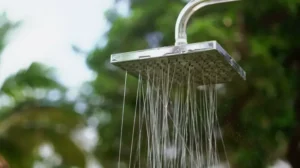
Many people are starting to reuse water. This is called greywater recycling. It means using water from baths and showers for other things. Like watering plants or flushing toilets. This helps us use less fresh water. It’s a smart way to help the Earth.
Frequently Asked Questions
Which Uses Less Water, Shower Or Bath?
Taking a shower generally uses less water than a full bath. A standard shower head flows at about 2. 5 gallons per minute, meaning a 10-minute shower uses 25 gallons. A full bathtub can hold up to 36 gallons, making showers the more water-efficient option.
How Long Is A Water-saving Shower?
A water-saving shower aims to be around 5 minutes. By limiting your shower to this duration and using a low-flow shower head, you can significantly reduce water usage. This practice not only saves water but also lowers the energy costs associated with heating water.
Can Baths Be Eco-friendly?
Yes, baths can be eco-friendly if done thoughtfully. Reducing the frequency of baths, partially filling the tub, or reusing bath water for gardening can make baths more environmentally friendly. Choosing eco-friendly bath products also contributes to a greener bath routine.
What Is The Average Water Usage For A 10-minute Shower?
The average water usage for a 10-minute shower is around 25 gallons, assuming the shower head has a flow rate of 2. 5 gallons per minute. However, water-saving shower heads that use less than 2 gallons per minute can reduce this usage significantly.
Conclusion
Choosing between showers and baths depends on your water use goals. Showers often use less water, making them a smart choice for saving. Baths provide a relaxing experience but can increase water consumption. Aim to be mindful of time spent under the water.
Simple habits make a big difference in your water bill and conservation efforts. Remember, every drop counts. Practice efficient water usage for a better environment and a happier wallet. Let’s make smart water choices together.

